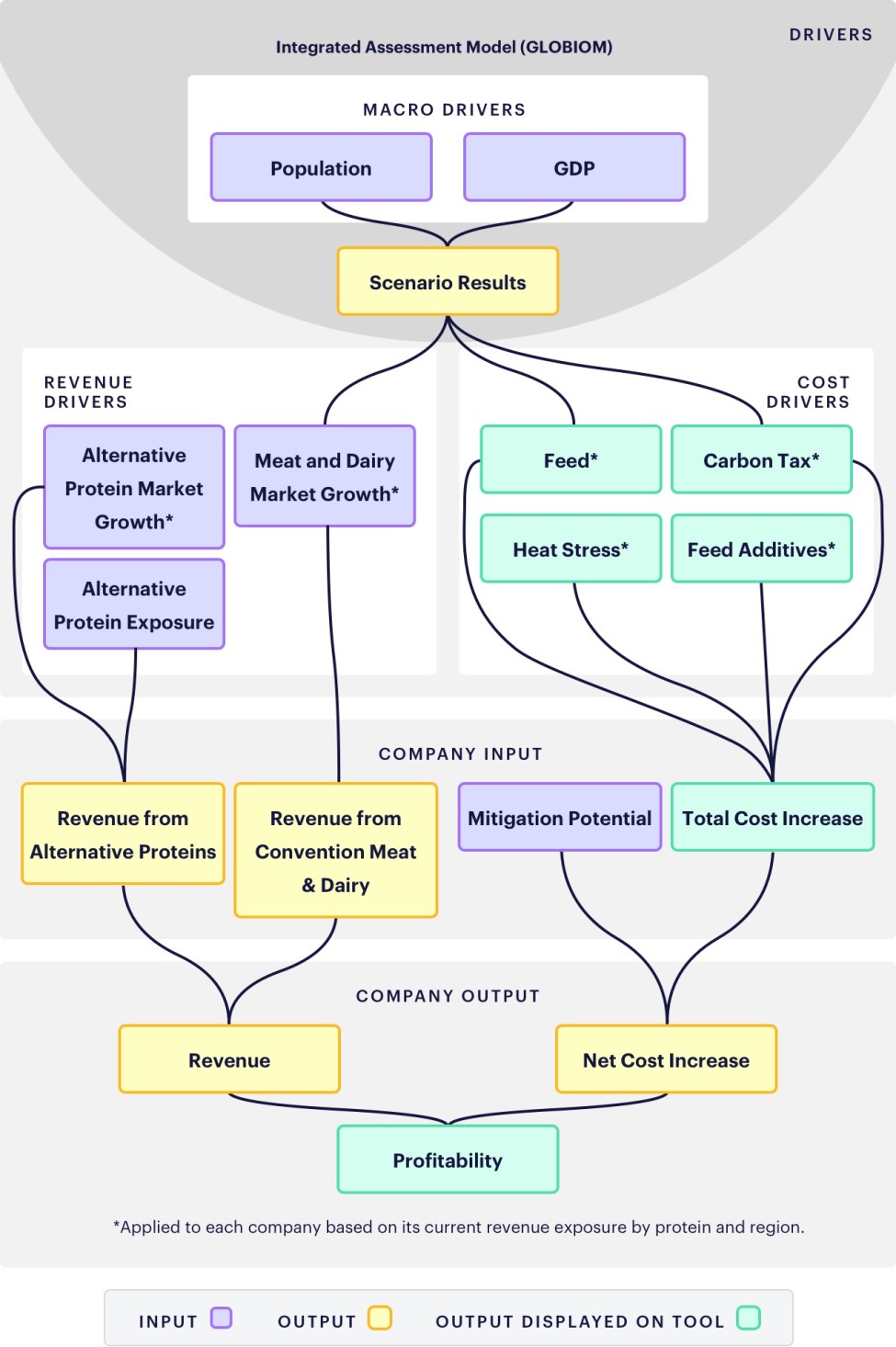Structure
How Our Model Works
The model assesses the impact of climate change on the costs and earnings of 40 of the world’s largest listed livestock companies. The results are provided for three scenarios – High Climate Impact, Business as Usual and Net Zero Aligned – for two time periods, up to 2030 and 2050.
The scenarios are created using an integrated assessment model and are aligned to climate narratives, the RCPs (Representative Concentration Pathways), SSPs (Shared Socioeconomic Pathways) as well as NGFS (Network for Greening the Financial System) scenarios. The data for different variables derived from these scenarios are then linked with company-level data on regional and protein exposure to examine the impact on profitability and costs for each company. The model also estimates each company's ability to mitigate costs, i.e., the mitigation potential, based on its current climate-related disclosure, performance, and strategy, using the scores given to each company on climate-related risks in the Coller FAIRR Protein Producer Index.
Scenario Overview
Scenarios | NGFS Alignment | Macro-economic Developments |
|---|---|---|
High Climate Impact | Too little too late | SSP5 – Fossil fuelled development |
BAU | Hot house world | SSP2 – Middle of the road |
Net Zero-Aligned | Orderly | SSP1 – Sustainability |
High Climate Impact
Actions to limit greenhouse gas (GHG) emissions are uncoordinated and unsuccessful at limiting temperature increases to 2.0ºC. Global efforts around mitigation are therefore “too little too late”, resulting in both high carbon pricing for the GHG emissions attributed to the agriculture sector and significant impacts on the sector’s productivity. The sector receives limited support to boost productivity.
Business As Usual (BAU)
Climate mitigation efforts are strong, with the agriculture sector facing taxes on GHG emissions, but this effort is uncoordinated across all sectors of the economy, resulting in a temperature increase of 2.0ºC by 2100. The agriculture sector faces moderate climate impacts. At the same time, investment in technology and efficiency to raise agricultural productivity for both crops and livestock is moderate.
Net Zero-Aligned
Efforts to achieve climate and environmental goals around the globe are driven by strong policy and individual action. Climate mitigation efforts by the agriculture sector through taxes on emissions attributed to production and land use change are strong and aim to restrict temperature increases to 1.5ºC by 2100, resulting in limited impacts on the sector’s productivity. The sector also benefits from robust support in R&D, aimed at raising productivity. The developed world moves towards healthier diets by reducing over-consumption, while the developing world increases food security without shifting towards livestock products. Taxes on the consumption of meat products further reduce livestock consumption.
